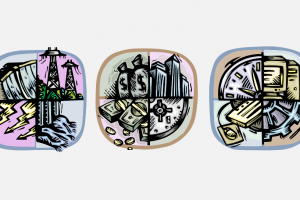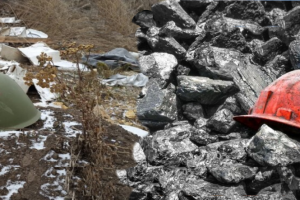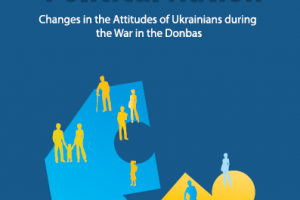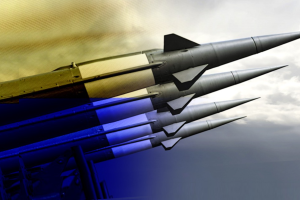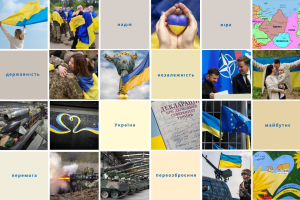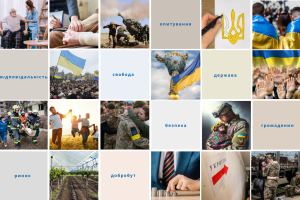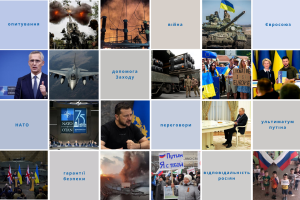METHODOLOGY
The nationwide survey was conducted by the Ilko Kucheriv Democratic Initiatives Foundation jointly with the sociological service of the Razumkov Centre between August 12 and 18, 2025.
A total of 2,002 respondents aged 18 and older were interviewed face-to-face. The survey covered residents of Vinnytsia, Volyn, Dnipropetrovsk, Donetsk, Zhytomyr, Zakarpattia, Zaporizhzhia, Ivano-Frankivsk, Kyiv, Kirovohrad, Lviv, Mykolaiv, Odesa, Poltava, Rivne, Sumy, Ternopil, Kharkiv, Kherson, Khmelnytskyi, Cherkasy, Chernihiv, and Chernivtsi regions, as well as the city of Kyiv.
In Zaporizhzhia, Donetsk, Mykolaiv, Kharkiv, and Kherson regions, the survey was carried out only in territories controlled by the Government of Ukraine and where active hostilities were not taking place.
The survey employed a stratified multistage sample design: random selection was used at the initial stages of sample formation, while quota sampling was applied at the final stage, where respondents were selected according to gender and age quotas. The structure of the sample reflects the demographic structure of the adult population of the surveyed territories as of early 2022, by age, gender, and type of settlement.
The theoretical sampling error does not exceed 2.3%.At the same time, additional systematic deviations of the sample may have resulted from the consequences of Russian aggression, in particular, the forced evacuation of millions of citizens.
Composition of macro-regions:
- West – Volyn, Zakarpattia, Ivano-Frankivsk, Lviv, Rivne, Ternopil, Chernivtsi regions;
- Centre – Vinnytsia, Zhytomyr, Kyiv, Kirovohrad, Poltava, Sumy, Khmelnytskyi, Cherkasy, Chernihiv regions, as well as the city of Kyiv;
- South – Zaporizhzhia, Mykolaiv, Kherson, and Odesa regions;
- East – Dnipropetrovsk, Donetsk, Kharkiv regions.
SURVEY RESULTS
Compared to the beginning of the full-scale invasion, the share of respondents who expressed the desire to build their future life in Ukraine has somewhat decreased—by 6 percentage points. This shift is associated with a parallel increase in the share of respondents who stated they would not like to build their future life in Ukraine. Despite this trend, as of August 2025, the proportion of those wishing to build their future life in Ukraine exceeds by 13 percentage points the figure recorded five years earlier: 83% in 2025 compared to 70% in 2020.
There is no statistically significant gender difference among respondents in their willingness to build their future life in Ukraine: 80% of men and 85% of women expressed such a desire. Conversely, 12% of men and 10% of women reported that they would not like to build their future life in Ukraine.
The older the respondents, the more frequently they reported the desire to build their future life in Ukraine. Among young people aged 18–29, 71% want to remain in the country, compared to 82.5% in the 40–49 age group, and as many as 91% among those aged 60 and older. At the same time, young people reported the highest share of unwillingness to build their future life in Ukraine compared to other age categories: 19%. Among respondents aged 40–49, this figure stands at 11%, while only 5% of those aged 60 and older said they did not wish to build their future life in Ukraine.
The regional distribution shows that the largest shares of respondents wishing to build their future life in Ukraine live in the central (85%) and western (85%) regions, while the lowest shares are in the southern (78%) and eastern (77%) regions. Unlike in other macro-regions, where the share of respondents unwilling to build their future life in Ukraine ranges from 9% to 10%, in the eastern regions it reaches 19%.
The level of respondents’ material well-being had virtually no impact on their willingness to build their future life in Ukraine.
The dominant feelings expressed by respondents when thinking about Ukraine’s future are hope (58%), anxiety (43%), and optimism (28%). Compared to the beginning of the full-scale invasion, respondents are now less likely to report feelings of optimism (–12 percentage points) and hope (–7 percentage points), and more likely to report confusion (+12 percentage points), anxiety (+12 percentage points), and fear (+8 percentage points). At the same time, when compared with data collected before the full-scale invasion, five years ago the shares of respondents reporting optimism and confusion about Ukraine’s future were the same as today, but the shares reporting hope (+15 percentage points), anxiety (+15 percentage points), and fear (+12.5 percentage points) have increased. Looking back twenty years, in 2005, after the Orange Revolution, the shares of respondents who felt optimism and hope when thinking about Ukraine’s future were similar to those recorded today, but the shares who feel anxiety (+19 percentage points), fear (+13 percentage points), and confusion (+11 percentage points) have risen significantly.
Throughout most of the 20-year monitoring of this question, the dominant feelings about the country’s future have remained hope, optimism, and anxiety. The exceptions were in 2013, when respondents—besides hope and anxiety—began to mention fear more often than optimism, and the period from 2014 to 2016, when the share of those experiencing fear gradually decreased while the share of those experiencing optimism steadily increased, returning to the traditional trio of “hope–anxiety–optimism.” In the last two years, 2024 and 2025, the share of respondents reporting fear when thinking about the country’s future has again returned to the levels observed in 2013–2016.
Among both men and women, the shares of respondents experiencing various feelings about Ukraine’s future, as offered in the questionnaire, are generally similar. However, women were 10 percentage points more likely than men to report fear regarding the country’s future.
Young people, compared to respondents in the oldest age group, more often reported optimism (+9 percentage points) and confidence (+8 percentage points), and less often anxiety (–9 percentage points) and fear (–12 percentage points).
Compared to respondents from the central and western regions, those from the southern and eastern regions more often expressed pessimism (+8 percentage points at median values) and less often hope (–19.5 percentage points at median values) when thinking about Ukraine’s future.
Financially and materially secure respondents, compared to those living below the poverty line, more often reported positive emotions about the country’s future, such as optimism (+13 percentage points), hope (+13 percentage points), and confidence (+13 percentage points), and less often negative emotions such as fear (–11 percentage points) and anxiety (–16 percentage points).
An absolute majority of respondents (73%) continue to believe in Ukraine’s victory in the war against Russia. Seventeen percent of respondents do not believe in victory. A significant shift in belief in Ukraine’s victory occurred in 2024, when the share of those who believed in victory fell by 11 percentage points. Over the past year, this decline continued, amounting to 4 percentage points, which only slightly exceeds the theoretical margin of sampling error.
There is no statistically significant difference between women and men in their belief in Ukraine’s victory. At the same time, young people, compared to respondents aged over 60, were more likely to believe in Ukraine’s victory (+8 percentage points), primarily due to a lower share of those who do not believe in victory (–7 percentage points).
The lowest level of belief in Ukraine’s victory is observed among respondents living in the eastern regions: 55.5% believe in victory, while 31% do not. For comparison, in the southern regions—closest to the east in terms of belief levels—69% believe in victory and 16% do not.
For most respondents, the three main indicators of Ukraine’s victory in the war are: the return of all Ukrainian prisoners, deportees, and abductees (37%); the preservation of Ukrainian statehood (31%); and the cessation of missile strikes on Ukraine (30%). Liberation of Ukraine’s territories within the 1991 borders was mentioned by 27% of respondents. The least significant indicators of Ukraine’s victory among those offered in the questionnaire were: the failure of the Russian offensive and stabilization of the front (12%); confiscation and transfer to Ukraine of seized Russian assets and funds (12%); and the continuation of international sanctions against Russia (11%).
If a referendum on the declaration of Ukraine’s state independence were held today, an absolute majority of respondents (82%) would support independence. Only 3% would not support Ukraine’s independence. Compared to the beginning of the full-scale invasion, the share of respondents who would support independence has decreased by 5 percentage points, due to an increase in the share of those who would not participate in the referendum. However, compared to 2019, the share of respondents who in 2025 would vote in favor of Ukraine’s independence at a referendum is 12 percentage points higher, while the share of those who would vote against independence is 6 percentage points lower.
Sixty percent of respondents believe that they and their families have benefited more from Ukraine’s independence. In contrast, 15% reported that they and their families have lost more as a result of the declaration of independence.
Young people were somewhat more likely than respondents over the age of 60 to agree that they and their families have benefited from Ukraine’s independence: 61% versus 55.5%, respectively.
At the macro-regional level, respondents living in the western regions were more likely than respondents from other regions to agree that they and their families have gained rather than lost from Ukraine’s independence. Among respondents from the western regions, 75% believe they have benefited from independence, compared to a median of 55% across the rest of the regions. Only 6% of respondents in the western regions believe they have lost from independence, compared to a median of 19% among respondents from other regions.
Respondents living below the poverty line, unlike those with better living standards, were the least convinced that they and their families have benefited from independence (37%). This is due to a larger share of those who believe they have lost from independence (+13 percentage points compared to the median across other categories) and those who remain undecided on this issue (+11 percentage points compared to the median across other categories).
Respondents’ belief in the interest in strengthening Ukraine’s independence increased with the degree of subjectivity and proximity to the respondent. According to respondents, representatives of the Ukrainian authorities and the opposition were the least interested. The people of Ukraine, in their assessment, were more interested than the authorities and the opposition. Compared to the Ukrainian population in general, respondents perceived the population of their own region as even more interested in strengthening independence. Finally, the highest level of interest in strengthening Ukraine’s independence, according to respondents, was expressed by themselves personally: 76% said they were strongly interested in Ukraine’s independence, while another 16% said they were somewhat interested.

